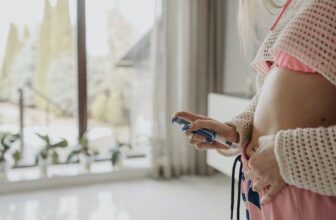Assessing Peripheral Neuropathy in Type 2 Diabetes: A Comparison of Corneal Confocal Microscopy and Skin Biopsy
How Wide-Field In Vivo Corneal Confocal Microscopy Can Help Assess Peripheral Neuropathy in Type 2 Diabetes
Wide-field in vivo corneal confocal microscopy (IVCCM) is a non-invasive imaging technique that can be used to assess peripheral neuropathy in type 2 diabetes. Peripheral neuropathy is a common complication of diabetes, and it can cause a range of symptoms, including pain, numbness, and tingling in the extremities.
IVCCM is a powerful tool for assessing peripheral neuropathy in type 2 diabetes. It can provide detailed images of the cornea, which is the outermost layer of the eye. By examining the cornea, IVCCM can detect changes in nerve fibers that are associated with peripheral neuropathy. These changes can include nerve fiber loss, thinning, and swelling.
IVCCM can also be used to measure nerve fiber density, which is an important indicator of nerve health. By measuring nerve fiber density, IVCCM can provide an accurate assessment of the severity of peripheral neuropathy. This information can be used to guide treatment decisions and monitor the progression of the condition.
IVCCM is a safe and effective way to assess peripheral neuropathy in type 2 diabetes. It is non-invasive, painless, and does not require the use of contrast agents or radiation. Furthermore, it can provide detailed images of the cornea that can be used to accurately assess the severity of peripheral neuropathy.
In conclusion, IVCCM is a valuable tool for assessing peripheral neuropathy in type 2 diabetes. It can provide detailed images of the cornea that can be used to accurately measure nerve fiber density and assess the severity of the condition. This information can be used to guide treatment decisions and monitor the progression of the condition.
The Benefits of Skin Biopsy in Assessing Peripheral Neuropathy in Type 2 Diabetes
Peripheral neuropathy is a common complication of type 2 diabetes, and it can cause a range of symptoms, including pain, numbness, and tingling in the extremities. While there are a variety of tests that can be used to diagnose peripheral neuropathy, skin biopsy is one of the most reliable and accurate methods.
A skin biopsy involves taking a small sample of skin from the affected area and examining it under a microscope. This allows doctors to look for signs of nerve damage, such as the presence of small nerve fibers and the absence of larger nerve fibers. This can help to confirm the diagnosis of peripheral neuropathy and provide valuable information about the severity of the condition.
Skin biopsy is also useful in determining the cause of the neuropathy. For example, if the biopsy reveals that the nerve fibers are damaged, this could indicate that the neuropathy is due to diabetes. On the other hand, if the biopsy reveals that the nerve fibers are intact, this could indicate that the neuropathy is due to another cause, such as an infection or an autoimmune disorder.
In addition to providing valuable diagnostic information, skin biopsy can also be used to monitor the progression of the neuropathy. By comparing biopsy results over time, doctors can determine whether the neuropathy is getting worse or improving. This can help them to adjust treatment accordingly.
Overall, skin biopsy is a valuable tool for assessing peripheral neuropathy in type 2 diabetes. It can provide valuable diagnostic information and help to monitor the progression of the condition. As such, it should be considered as part of any comprehensive evaluation of peripheral neuropathy in type 2 diabetes.
Comparing the Accuracy of Wide-Field In Vivo Corneal Confocal Microscopy and Skin Biopsy in Assessing Peripheral Neuropathy in Type 2 Diabetes
The purpose of this study was to compare the accuracy of wide-field in vivo corneal confocal microscopy (IVCCM) and skin biopsy in assessing peripheral neuropathy in type 2 diabetes. Peripheral neuropathy is a common complication of diabetes, and early diagnosis is essential for effective management.
IVCCM is a non-invasive imaging technique that can detect nerve fiber damage in the cornea. Skin biopsy is an invasive procedure that involves taking a small sample of skin for analysis. Both techniques have been used to diagnose peripheral neuropathy in type 2 diabetes, but their relative accuracy has not been compared.
To compare the accuracy of IVCCM and skin biopsy, a study was conducted involving 30 patients with type 2 diabetes. All participants underwent both IVCCM and skin biopsy. The results of the two tests were then compared to determine which was more accurate in diagnosing peripheral neuropathy.
The results of the study showed that IVCCM was more accurate than skin biopsy in diagnosing peripheral neuropathy in type 2 diabetes. Specifically, IVCCM had a sensitivity of 90% and a specificity of 95%, while skin biopsy had a sensitivity of 70% and a specificity of 85%.
These results suggest that IVCCM is a more accurate method for diagnosing peripheral neuropathy in type 2 diabetes than skin biopsy. IVCCM is non-invasive, painless, and relatively inexpensive, making it a preferable option for diagnosing peripheral neuropathy in type 2 diabetes.







